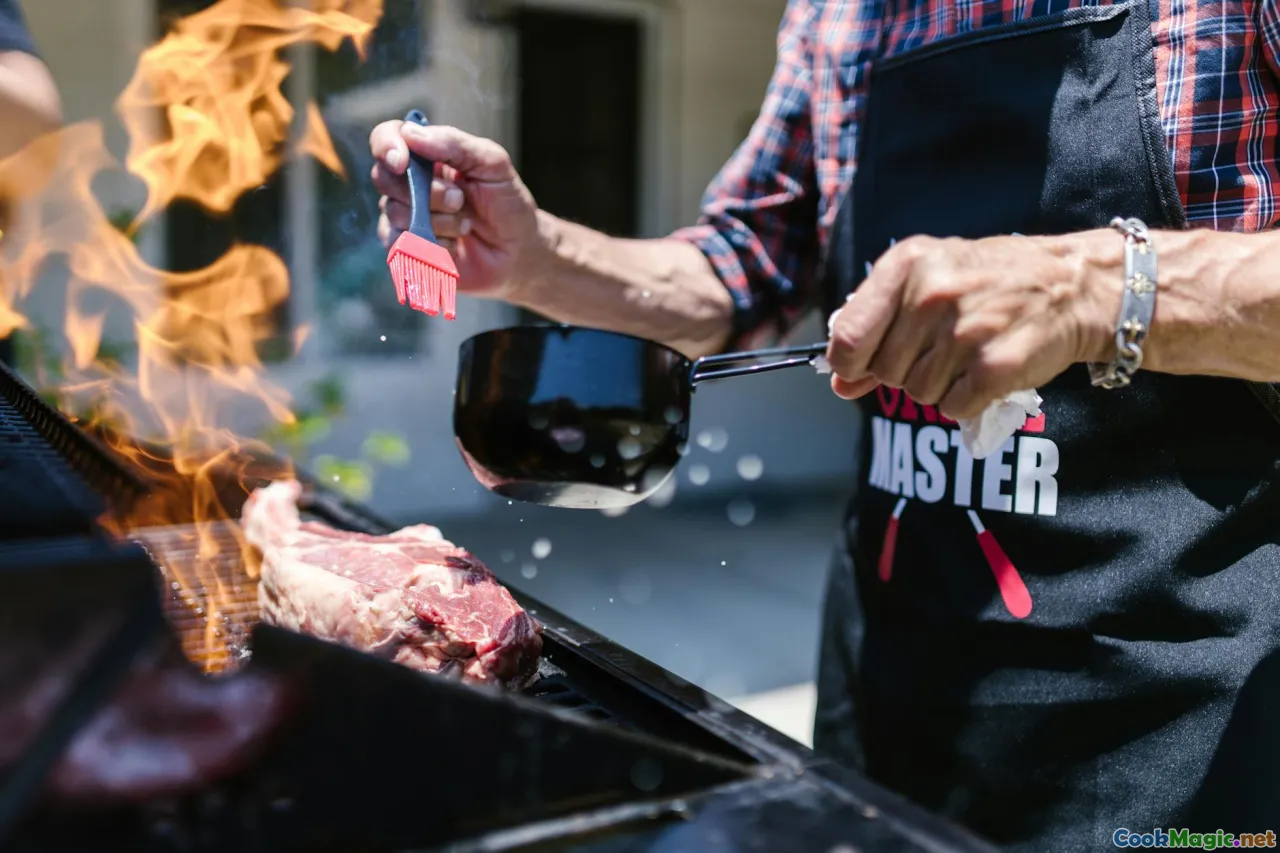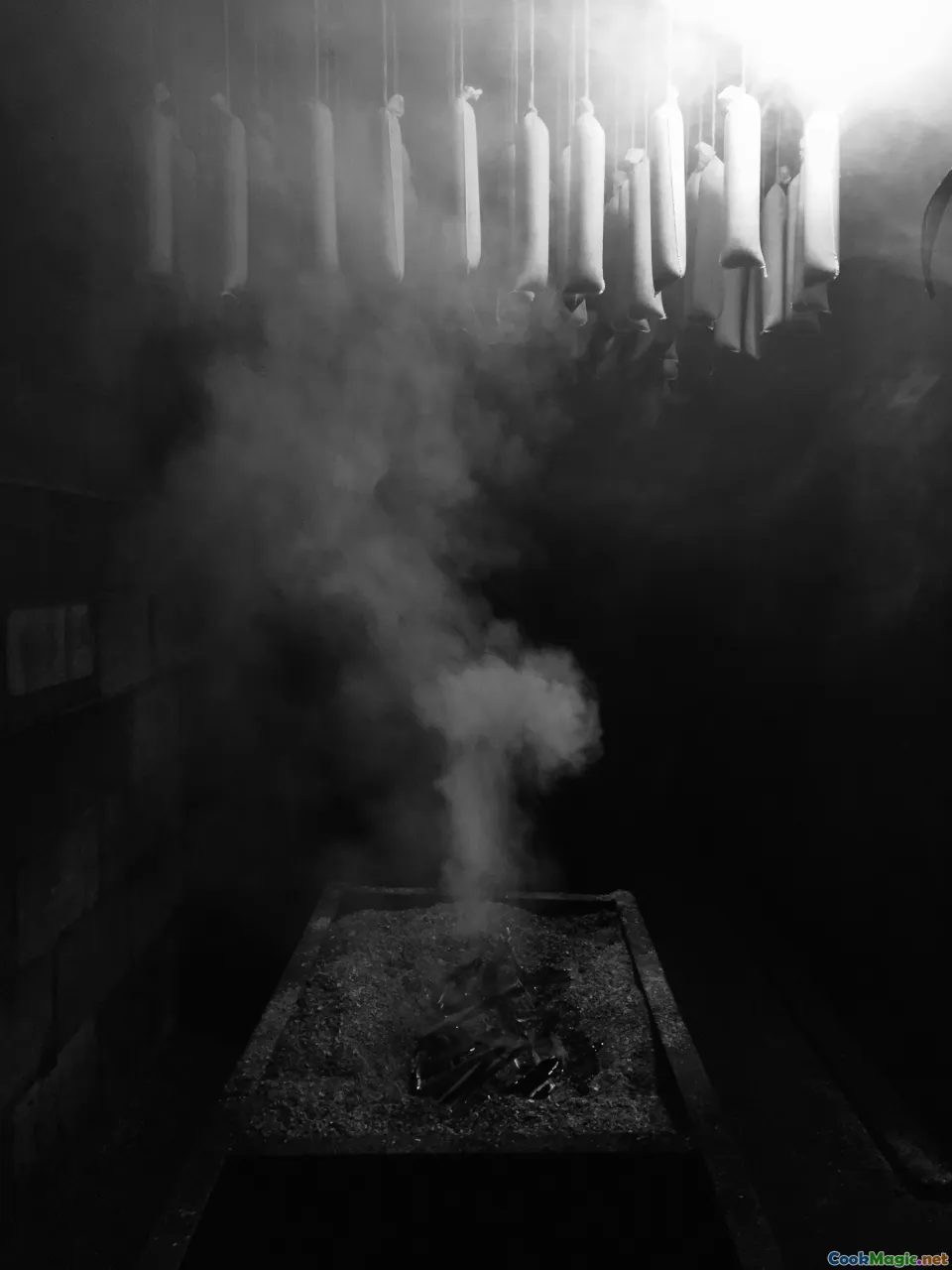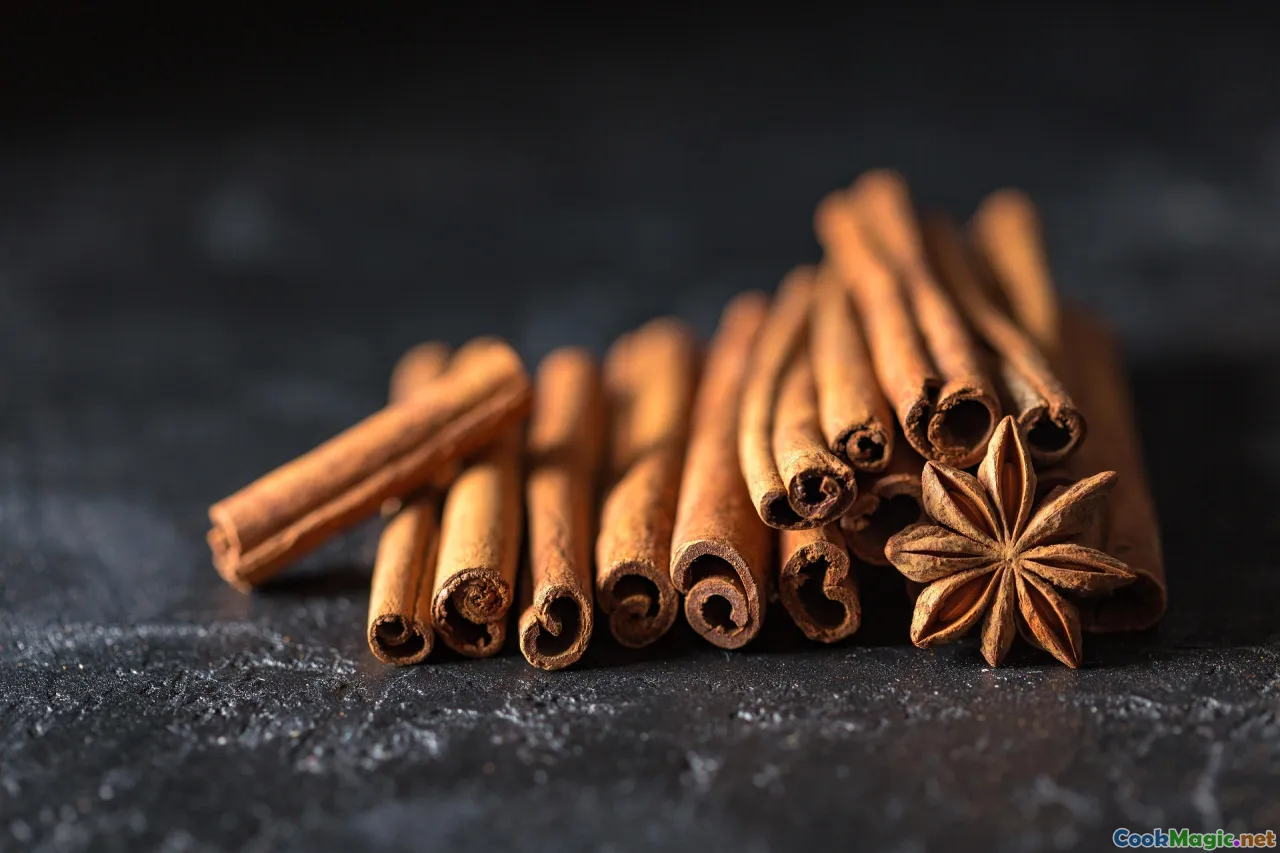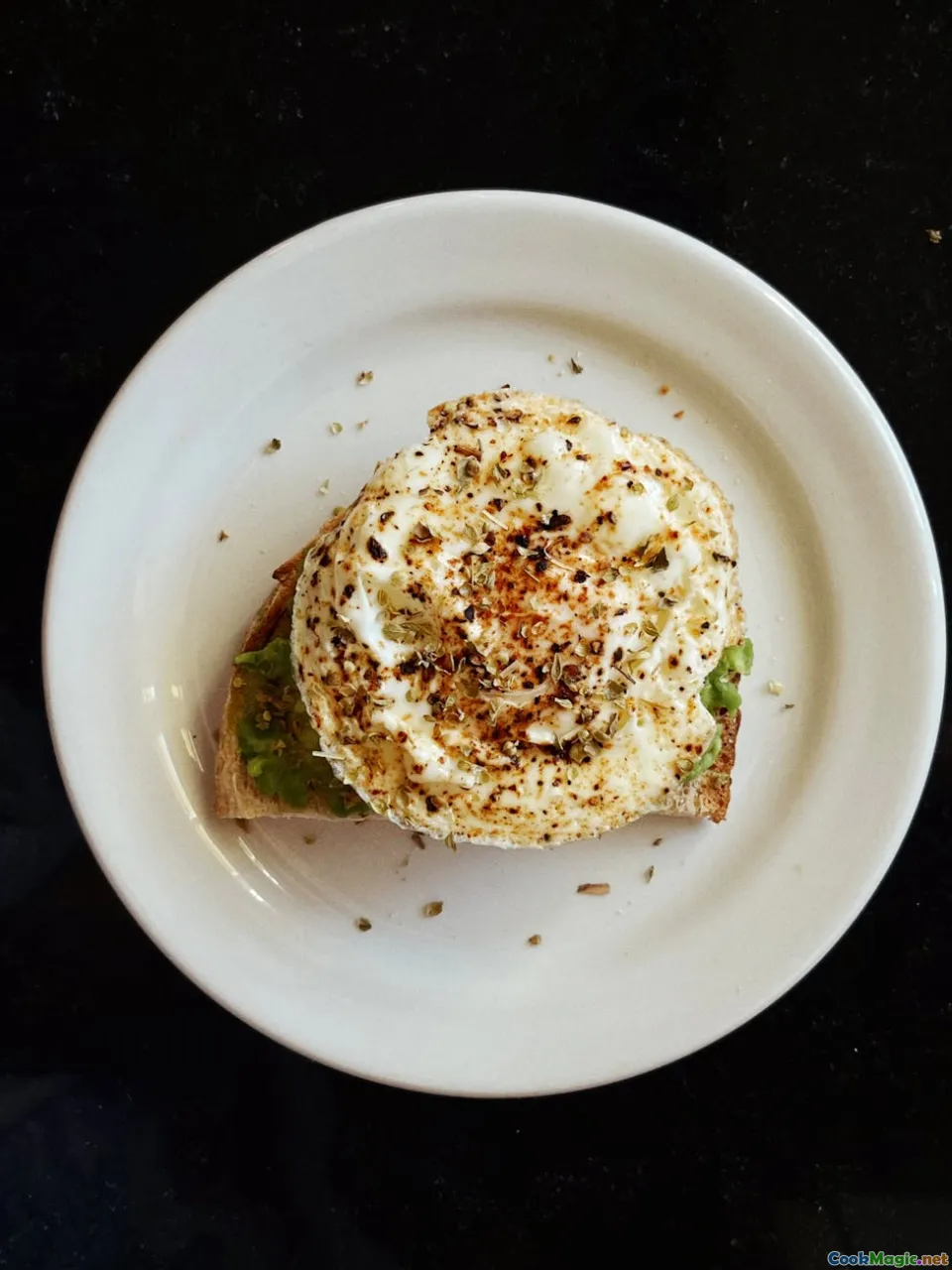Mongolian Barbecue Techniques Unveiled
38 min read Unveil Mongolian barbecue techniques: flat-top heat mastery, thin-slicing, marinade and sauce layering, sequencing, and interactive market-style builds—uniting tradition, spectacle, and bold flavor. October 07, 2025 00:07
A steppe wind tugs at the canvas flap of the ger, delivering a curl of smoke that smells like sun-dried grasses and lamb fat turned sweet over fire. Bilegt, the herder who invited me in from the cold near the Orkhon Valley, sets a dented Soviet-era milk can onto a ring of embers. From a sack at his feet, he pulls smooth, river-dark stones and tongs them into the coals until they glow with a dull, threatening peach. He salts chunks of mutton—the tail fat opaque and creamy, the shoulder meat the muted red of a winter dawn—and drops them into the can with onion halves and a slosh of water. When the stones are hot enough to spit, he nests them among the meat, clamps the lid, and lets the fire and pressure make their pact. Later, when the can hisses, we crack it open and the air becomes broth and fleece and iron. Someone passes a hot stone from the pot into my hands—a quick prayer of warmth racing up the wrists—before the feast begins.
That dish is khorkhog, and it is what many Mongolians mean when they speak of barbecue. Outside the country, the phrase "Mongolian barbecue" conjures a different picture: a gleaming circular griddle ringed by bowls of sauce, where cooks sweep spatulas in a percussive 360-degree performance. Both scenes are true in their own ways. But if you want to understand the soul of Mongolian barbecue—its tastes, its textures, its rituals—you must learn to cook with heated stones, in iron, inside the very skin of an animal, and sometimes on a steel disk that never knew the Mongolian wind. Here are the techniques, stories, and sensory cues that will take you there.
What Mongolian Barbecue Really Is—and Isn’t

The phrase has traveled, gathered baggage, and sometimes shed its origins entirely. In Mongolia, two ancestral techniques encapsulate the idea of barbecue: khorkhog and boodog.
- Khorkhog is barbecue in a sealed vessel. Meat—usually mutton or goat—is layered with heated stones inside a milk can or heavy pot. A little water, a lot of fat, scant seasoning, and time under pressure transform tough cuts into custardy flesh. It is indoor winter fire and summer pasture picnic both.
- Boodog shifts the vessel: the animal’s own skin becomes the pot. Most commonly, Mongolians prepare goat boodog; in some regions, marmot boodog appears, a practice wrapped in taboo, regulation, and a red thread of risk.
What many of us abroad call Mongolian barbecue—the theatrical iron griddles of Taipei and beyond—was born not in the grasslands but in mid-20th-century Taiwan. It borrows the name of Genghis Khan the way a cologne borrows a mountain: for marketing, for myth. It is delicious, fast, adaptable, and worth knowing as a technique, but it is a cousin rather than a direct heir.
Holding both truths in your hands—the stone-warmed, bone-in reality and the sauced, griddle-slick cousin—is the key to cooking respectfully and joyfully across cultures.
The Nomad’s Pantry: Salt, Fat, Smoke, and the Milk of Summer

Mongolia’s pantry is seasonal, portable, and calorically honest. Nomadic life demands ingredients that travel and sustain.
- Meat: Mutton is king. Not lamb politely trimmed of its personality, but full-grown sheep with tail fat that renders into an almost floral sweetness. Goat appears often. Beef and horsemeat show up by region, but for barbecue, mutton’s robust perfume stands up to heat and stone.
- Fat: Tail fat (khazan) and interior fat are prized. They carry flavors across the tongue, turning lean muscle into something that slips apart like warm clay.
- Salt: No spice semaphores; no technicolor pantries. Just salt. Occasionally a whisper of black pepper or wild caraway, but salt is the center.
- Smoke and Fuel: Wood is rare on the steppe. Dried dung—argal—burns clean and hot with a scent that is grass and sun more than barnyard. Where wood or charcoal appear, they are used sparingly. Heat management is a practiced art.
- Dairy: Airag (fermented mare’s milk), tarag (yogurt), a panoply of cheeses and curds concentrated from summer abundance—these are not barbecue components, strictly, but they attend the table and they contour the palate. Suutei tsai, salty milk tea, rinses fat from the mouth and resets appetite.
The flavor profile is not shy; it is spare. The absence of spice is a presence: it presses your attention into the meat itself, into the water that becomes broth, into the stones as they whisper heat into bone.
Khorkhog: Barbecue in a Milk Can (How-To and Sensory Notes)

Khorkhog is a method written in iron and steam. It reads like a dare and eats like a hug.
What you need:
- A metal milk can with locking lid, or a heavy, sealable pot or pressure-capable Dutch oven
- Egg-to-fist-sized river stones, nonporous and heat-stable (granite or basalt)
- 3–4 kg mutton or goat, cut into large chunks, bone-in (shoulder, leg, ribs; include fat)
- 2 onions, halved; 2–3 carrots; 3–4 potatoes (modern additions, but common in households)
- Salt, 20–25 g per kg of meat
- 200–300 ml water
The method:
- Prepare stones: Choose dense, nonlayered rocks. Wash, then heat directly in coals until a sprinkle of water flashes to steam. They should be fiercely hot, bordering on intimidating.
- Layer the pot: Scatter a layer of hot stones, working quickly. Add seasoned meat and vegetables, then more stones. Alternate until the pot is full, ending with stones. Pour in the water—it will hiss and bloom into instant savory vapor.
- Seal and set to fire: Clamp the lid. In a ger, the pot sits on a stove or over a small, steady fire. Outdoors, nestle it in coals. Listen. You want a low, animal breathing of steam—not a scream.
- Cook 45–90 minutes: Time depends on vessel, heat, and cut. The sensory cue is the scent: raw mutton’s lanolin edge transforms into something like browned butter with a whisper of felt.
- Vent and rest: Crack the lid, letting the steam slap your face with broth and grass. Pour off the liquid into bowls—this is shöl, the meat tea that preludes the feast. Let the meat rest in the residual heat for 10 minutes.
- Serve and stone ritual: The stones come out glossy with fat. Each guest takes one in a cloth, rolling it between palms to absorb heat and luck. Meat is eaten with fingers, broth sipped between bites.
Sensory markers of success: Fat is translucent; connective tissue bows to pressure. The meat yields with the sigh of wet wood giving way under a boot. The broth is clear but deeply lamb-sweet, with a film of fat that catches the light like lacquer.
Culinary adjustments: Some cooks add a bottle of beer instead of water for malty undertones. Others tuck in garlic or a bay leaf, though purists will tell you the sheep should not share the spotlight. I’ve enjoyed both versions; the beer-khorkhog smelled like bread at the edges, the pure version like a meadow on fire.
Boodog: Barbecue Inside the Animal (Story, Technique, and Caution)

Boodog is a lesson in containment and faith. The pot is the skin; the lid is a tied throat. Heat is both inside and out.
A goat is skinned with the hide kept largely intact as a sack. Hair is singed off with a blowtorch or over flame until the surface is glossy and darkened, not unlike a roasted pepper. The bones come out; the meat and organs go back in with salt, sometimes onions, sometimes carrots. Heated stones drop inside like meteors. The neck and leg openings are lashed tight. The carcass, now rigid with heat and pressure, is turned and turned near a fire, fat rendering, steam thundering against skin. When done, the boodog inflates slightly and emits the faint whistle of a kettle—a sound that makes the hair on your arms rise even if you’re not the superstitious sort.
In parts of Mongolia, hunters prepare marmot boodog in late summer, a practice entwined with strict traditions and modern restrictions. Marmots in some regions carry plague; harvesting seasons are regulated; techniques are passed within families. If you are an outsider, eat this only when offered by those who know what they are doing, and consider choosing goat boodog as the safer, more sustainable celebration of the technique.
Eating boodog is primal and refined at once: the skin is a charred armor; the inside is a room of steam. The first taste is wild and mineral, the second rich and quiet. Stones, again, are passed and palmed.
The Science of Stones: Choosing, Heating, Handling

For all their prehistoric romance, stones are technical tools. Choosing the right ones—and listening to their cues—matters.
- Composition: Nonporous igneous rocks like basalt and granite work best. Avoid layered sedimentary rocks (like shale) and calcareous stones (like limestone) that can crack or explode when heated.
- Size: Egg to fist size (5–8 cm across) gives both surface contact and thermal mass. Too big, and they slow the cook and risk scorching; too small, and they cool too quickly.
- Preparation: Wash and dry thoroughly. Moisture trapped in pores is a hazard. I place them near a gentle heat first to drive off residual water before committing to the blaze.
- Heating: Bury in coals or place directly in a wood fire. You want 400–500°C—hard to measure in the field, but a drop of water should vanish like a magician’s trick, the stone should wave a mirage of heat from its surface.
- Handling: Use long tongs and thick gloves. Your hands will smell like iron and animal fat later—this is not a downside.
- Reusability: Good stones season like cast iron. They darken and gloss with fat. After use, scrape and bake them clean in a low oven or over residual heat. If a stone cracks, retire it with gratitude.
Sensory cue to watch: when you add a hot stone to meat, there’s a distinct high hiss followed by a deeper gurgle as fat renders and water meets heat. The chorus should be lively but not frantic.
Fuels of the Steppe: Argil, Wood, and Managing Fire

In a landscape where trees are sparse, fuel is culture. Argal—sun-dried dung from sheep, goats, cattle—burns hot and surprisingly clean, carrying a faint aroma of aromatic grasses. It lights easily, holds heat, and produces a steady bed of coals perfect for stone heating and gentle pot simmering.
If you cook khorkhog on a modern grill or stovetop, mimic argal’s steady output. Think: a full chimney of hardwood charcoal banked to one side for a hot zone (stone heating), the rest as a medium bed for the pot. In a ger, a cylindrical iron stove eats argal and breathes heat up through a ring where pots can perch. The entire system is designed for permanence and portability.
Wind is a constant in Mongolia. Shield your fire. Build small and hot. The ambition to stack fuel high is for photographs, not for cooks.
Seasoning Philosophy: Salt, Steam, and the Language of Fat

To a spice-drawer devotee, Mongolian seasoning reads like a short poem instead of a novel. But each line punches above its weight.
- Salt: Use it early and generously—but not to brine. Salt on the meat draws out a small amount of moisture that becomes a briny steam inside the vessel, carrying flavor deep into muscle fibers. Twenty to twenty-five grams per kilogram of meat is a good starting point.
- Steam: Don’t fear it. In barbecue cultures that worship dry heat, steam is a pariah. Here, it is symphony. Steam dissolves collagen, transports fat, and sets textures softly without erasing the meat’s structure.
- Fat: Tail fat, marrow, the ribbons veining a shoulder—fat is both solvent and seasoning. It rounds the corners of salt and makes the broth glossy. The goal is balance: enough fat to carry, not so much to coat the mouth into numbness.
- Optional notes: Wild caraway (kumin) finds its way into some pots, especially in the north. In Ulaanbaatar apartments, black pepper and a bay leaf may sneak in. Honor the meat first; introduce extras carefully.
Sip the shöl before you tackle the meat. It will teach you everything about the salt-flesh-handshake you achieved.
The Round Griddle Abroad: Taiwanese-Style “Mongolian Barbecue” Decoded

Walk into a BD’s Mongolian Barbeque in Michigan or any number of griddle-centric restaurants across Asia and you will see a circular flattop flanked by bowls of sliced meat, noodles, and a rainbow of sauces. The cook takes your bowl, flings it onto the steel, and churns the ingredients into glossy, smoke-laced harmony.
History buffs point to Taipei in the 1950s, where performers and vendors popularized a theatrical, high-heat stir-fry on domed or flat griddles—variously attributed to showman Wu Zhaonan and others—branding it “Mongolian barbecue” for its whiff of conquest and open-fire romance. The technique resembles teppanyaki more than khorkhog: direct contact heat, constant movement, sauce-forward profiles.
Technique notes for the griddle style:
- Heat: You want a ripping-hot surface—think 250–300°C—so ingredients sear, not steam. The smell you’re chasing is soy caramel colliding with toasted sesame and char.
- Bowls: Build with intention. Choose one or two proteins; layer aromatics (garlic, ginger), then vegetables, then sauces and fats. The order in the bowl becomes the order on the grill.
- Sauce architecture: Base (light soy) + sweet (brown sugar or hoisin) + acid (black vinegar) + heat (chili paste) + aroma (garlic/ginger/scallion) + fat (sesame oil or lamb tallow) + umami (oyster sauce). Aim for balance, not a dare.
- Movement: Toss and sweep. Spread for contact; gather to pool sauce. Finish with a mow of scallions.
Is it Mongolian? In passport, no. In spirit—the love of fire, the communal spectacle—it shares a border.
Recreating Khorkhog at Home: Practical Pathways

You can make khorkhog without a ger, a river, or a Soviet milk can. Here are three home adaptations, ranked by fidelity.
- Milk can or clamp-lid canister over charcoal:
- Source a food-safe metal milk can or a stainless-steel canister with a tight clamp lid.
- Heat granite stones in a charcoal chimney until scorching.
- Layer meat, vegetables, stones, and 250 ml water. Clamp.
- Set on a grill over a medium bed of coals. Cook 60–75 minutes. Vent carefully.
- Pros: Closest to the real texture and ritual.
- Cons: Equipment sourcing; safety vigilance.
- Heavy Dutch oven + oven or grill:
- Preheat oven to 220°C or set up a grill for indirect heat around 200–220°C.
- Layer meat and vegetables with pieces of preheated cast-iron or ceramic pie weights as stone stand-ins, if desired, or go without.
- Add 200 ml water and a knob of lamb fat if you have it. Cover tightly; bake 75–90 minutes.
- Pros: Predictable heat, minimal risk.
- Cons: Missing the stone hiss; texture slightly flatter but still superb.
- Pressure cooker or Instant Pot (urban khorkhog):
- Salt the meat well. Add meat, vegetables, 200 ml water. Cook at high pressure for 35 minutes; natural release 10 minutes.
- Finish under a broiler or in a hot pan with lamb fat to add Maillard notes.
- Pros: Weeknight khorkhog; astonishingly tender.
- Cons: Lacks the smoky whisper; broth can be too clean without a finishing sear.
Serve with bowls of shöl, black bread or boortsog (fried dough), and pickled carrots to cut richness.
Three Cook-Throughs: From the Steppe to the City

- Orkhon Valley Field Khorkhog
- Scene: A poplar windbreak, horses snorting steam, a chipped enamel basin of lamb shoulder chunks veined with fat.
- Stones: Collected river stones; hand-hot, soot-striped.
- Flavor: Pure salt. No herbs. Vegetables a luxury, not a given.
- Technique detail: Water poured in is scant—a ladle’s worth—because the meat will give. Lid is sealed with a paste of flour and water to keep steam honest.
- Sensory payoff: The broth tastes like the smell of rain on dry grass. Meat fibers arc but don’t shred; they part with your thumb.
- Ulaanbaatar Apartment Khorkhog
- Scene: A ninth-floor kitchen in Bayanzürkh district. Dutch oven, induction cooktop, balcony door cracked to the city’s coal-silver air.
- Stones: None; a heavy pot plus a handful of lamb bones for thermal mass.
- Flavor: Salt, a punctum of cracked pepper, two bay leaves smuggled in by a grandmother who lived enough winters to believe in small comforts.
- Technique detail: After cooking, the meat gets a quick sizzle under a broiler to replay lost Maillard music.
- Sensory payoff: Apartment khorkhog’s broth is city-intense—more caramel at the edges, less meadow—but still honest. Perfect with suutei tsai.
- Backyard Griller’s Khorkhog
- Scene: Suburban terrace, kettle grill, a bag of hardwood lump charcoal, and a run to the landscaping supplier for rounded granite.
- Stones: Heated in a chimney until they radiate heat like small suns.
- Flavor: Salt, a dash of beer instead of water for malt notes, spring onions added at the end.
- Technique detail: The milk can sits offset from the coals; a digital thermometer spies on the pot (target internal environment near 120–130°C). Finish with the lid open to let smoke kiss the meat.
- Sensory payoff: The first pop of skin against tooth is faint; the second bite dissolves. The beer note hums like a bass line.
Tools and Sourcing: Cans, Stones, and Mutton

- Milk can: In Mongolia, old aluminum or steel cans circulate like heirlooms. Abroad, look for stainless clamp-lid canisters used in dairies or breweries. Ensure food-safe interiors and sturdy gaskets. A large pressure cooker with a weighted valve can substitute if you respect pressure safety.
- Stones: Avoid decorative “river rock” with unknown composition. Seek landscaping granite or basalt labeled heat-proof. Test outside first. Never use stones from saltwater beaches—they may trap moisture or salt crystals.
- Mutton and goat: In the West, mutton is rare but findable at halal butchers or South Asian markets. Ask for older sheep; don’t settle for lamb if you want the full perfume. Goat (chevon) is more common at Caribbean, Mexican, and South Asian shops.
- Fat: Tail fat is a prize; if unavailable, rendered lamb tallow works. Save trimmings and render slowly; the kitchen will smell like a good sweater.
- Extras: Long tongs, welding gloves, a stable trivet for your pot, and a metal bucket to park sizzling stones.
Sensory Cues: When Barbecue Is Ready

The thermometer is useful, but the dish talks.
- Aroma: Raw mutton’s woolly note dilates into browned butter with grass. Onions whisper sweetness without turning jammy.
- Sound: The pot starts a steady breathy hiss. Toward doneness, the burble slows; the pressure sighs rather than pants.
- Touch: Press a chunk with chopsticks or a spoon; it should bounce then yield, like the lobe of your ear.
- Sight: The surface of the broth glosses with a thin, even sheen—not a clotted scum. Meat edges are satin, not ragged.
- Taste: The shöl should be gently salty. If flat, salt the broth, not the meat at this stage. If too salty, add hot water and simmer a few minutes to re-equilibrate.
Griddle Craft at Home: Building a “Mongolian Barbecue” Bowl that Sings

If the round-griddle style seduces you—and it seduces me—approach it with a cook’s math.
- Equipment: A carbon steel wok over a jet-engine burner or a plancha on a gas grill. Do not crowd; do not apologize to the heat.
- Ratio for a single bowl (two portions):
- 250 g sliced meat (lamb leg or shoulder, beef chuck)
- 150 g noodles (udon or wheat), pre-cooked
- 200 g mixed veg (cabbage, onion, bell pepper, bean sprouts)
- Sauce blend: 2 tbsp light soy + 1 tbsp brown sugar + 1 tsp black vinegar + 1 tsp chili paste + 1 tsp minced garlic + 1 tsp minced ginger + 1 tbsp oyster sauce + 1 tsp sesame oil. Optional: 1 tbsp lamb tallow for authenticity of flavor.
- Method: Sear meat in tallow until edges char-kiss; remove. Flash vegetables until edges blister. Return meat; add noodles and sauce; toss until glossy and just thickened. Finish with scallions and toasted sesame.
- Flavor check: You want salinity first, sweetness second, heat third, vinegar as a disappearing act that props everything up.
This is not steppe cooking. It is, however, a deeply satisfying way to honor lamb’s presence on a steel stage.
Hospitality and Ritual: Serving, Toasts, and What to Drink

A Mongolian barbecue is not just a cooking method; it is a choreography of welcome.
- The stone pass: When khorkhog emerges, hot stones cycle through hands for warmth and luck. The sting on your palm maps the path the animal’s heat takes through the room.
- The order of eating: Shöl first, then meat. Fatty pieces offered to elders or honored guests. If you are served tail fat, accept with gratitude—it is an edible blessing.
- Drinks: Suutei tsai—milk tea salted just enough to make you notice—cuts through richness. Airag, tart and effervescent, is lovely in summer with bodog. Vodka often appears for toasts; the most moving toast I witnessed was a quiet “to the animals,” glass held just below the lips, eyes meeting across the table.
- Bread: Boortsog (fried dough) catches fat like a friendly hand. Simple wheat breads and a bowl of pickled cabbage ride shotgun in city homes.
Mind the pace. Barbecue here is not rush. It is talk and silence, the removal and addition of layers, the polite insistence to eat more.
Beyond Meat: What Else Sits Well Beside the Pot

Mongolian tables are select but not austere.
- Khuushuur: Fried meat pies that crackle and drip. If you have leftover khorkhog meat, shred it with a little broth to stuff into fresh dough. The smell of frying khuushuur with mutton-scented steam is outrageous.
- Salads: Carrot and cabbage salads dressed lightly with vinegar and a pinch of sugar offer snap. Nothing elaborate; think refreshment, not centerpiece.
- Dairy: Fresh tarag (yogurt) or clotted cream can appear as a closing note, cooling the mouth’s memory of fat and heat.
- Sauces: In urbane settings, you might encounter a simple chile-garlic paste or a dollop of mustard to smear on fatty bites.
Troubleshooting and Touch-Ups

- Overcooked meat, dry edge: You likely ran too hot for too long, or lacked fat. Shred and fold into hot broth to rehydrate; serve as a noodle soup the next day.
- Undersalted broth: Add salt to the shöl—not the meat on the plate—and simmer a few minutes to integrate.
- Exploding stones anxiety: Use proper stones. Heat slowly at first to drive out moisture. If a stone cracks audibly on heating, discard it.
- Flat flavor: Swirl a teaspoon of lamb tallow into the broth. Fat is a flavor vehicle; a little goes far.
- Lack of smoke: Finish the opened pot over a small, fragrant wood fire (birch, apple), letting smoke wash the meat for 3–5 minutes without turning bitter.
A Note on “Genghis Khan” and Other Cousins

Japan’s jingisukan (Genghis Khan) is a lamb dish grilled on a convex, ridged dome, often surrounded by onions and bean sprouts so fat drips flavor downhill. You’ll find it in Sapporo at places like Daruma, where the metal’s dome caramelizes lamb fat into candy. It’s not Mongolian in origin, but it is a study in how the world imagines the steppe: lamb, flame, communal table.
Across Central Asia, shashlik—skewered, marinated meats over open coals—also brushes against Mongolian borders. Urban Mongolians grill skewers on summer balconies and in parks, threading the needle between old tastes and new devices.
Knowing the cousins sharpens your understanding of the family.
The Emotional Geometry of a Pot, Some Stones, and a Wind

The first time I stood outside a ger at night, the shape of the thing—low as a shoulder, white as moonlight—made the sky bigger by comparison. Inside, everything was a circle: the stove, the ring of family, the pot. Khorkhog is circular, too. Stones go in hot and come out warm; meat goes in tough and comes out gentle; hands pass heat until it becomes memory.
For the professional cook, the lesson is restraint. For the home cook, it’s courage: to trust steam where you were taught to crust, to salt with conviction, to let fat be a friend. For anyone who has ever chased authenticity like a mirage, the steppe offers a quiet correction. Techniques travel. Names drift. But a good dish, shared with intention, is hard to mistake.
When I left Bilegt’s ger, the smoke had worked its way into my coat and my hair. For days, kitchens and subways and hotel elevators would re-bloom with mutton and grass every time I moved. It was the kind of souvenir I wish airports sold: a persistent reminder that real barbecue is not only a set of techniques, but a way a room feels when heat meets hunger and a pot meets patience.
So, whether you drop stones into a can in your backyard or sling lamb across a steel plate in a city kitchen, aim for that feeling. Hear the hiss soften to a purr. Taste the broth first. Pass a hot stone to someone you care about. And let the wind, wherever you cook, knock on your door just once before you clamp the lid.









